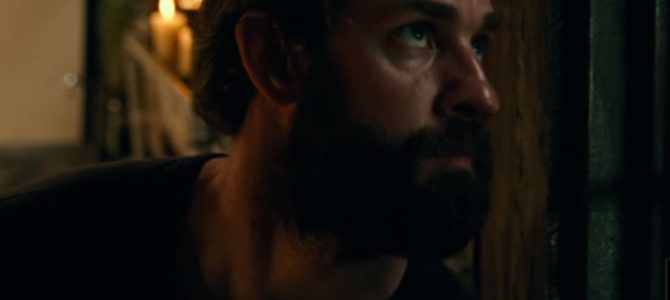
This review contains a plot spoiler.
“A Quiet Place” is the rare horror movie that wins the weekend box office, making more than $50 million on a $17 million budget. Rarer still, it’s a movie about a family trying to survive the end of the world in a rural setting. It’s not about individualism, it’s not about rugged heroes or implausible survivors—it’s about a mother, a father, and their children. All the fear stems from our need to protect what we love the most.
Rarest of all, it achieves through horror the simultaneous dramatization of our fears about raising children and the future we prepare for them. The stuff of everyday life is raised to an emotional pitch that only makes sense when our very lives are threatened. The result is that the movie brings out the morality of suffering and sacrifice we aspire to for our children.
“A Quiet Place” is written and produced by a team of horror writers, Bryan Woods and Scott Beck, and directed by John Krasinski, who also wrote, produced, and starred in it. This might help keep the budget down and give movie-makers control over their story.
This is especially useful for a movie that depends on making a soundless story work. Much of the dialogue is in sign language and much of the drama conveyed by facial expressions, as in the days of silent movies. This is one of a number of daring directorial choices that should win Krasinski acclaim commensurate with the movie’s box office success.
Parents Risk Annihilation to Bring Children to the World
Now, as for the story—I won’t spoil any of the surprises. The trailer itself does a good job of setting up the moral drama. In the words of the mother: Who are we if we can’t protect them? In a world ever-more obsessed with self-expression, where identities proliferate endlessly, and increasingly aggressively, we see the non-negotiable basis of society. Parents renounce their individual identities to a great extent in order to dedicate themselves to something bigger than themselves, but also something that’s out of their control. They risk annihilation to bring children into this world.
Parents now tend to react to this awareness by planning every aspect of a child’s life. So we get to see an entire surveillance system and all the precautionary measures by which mother and father try to make sure their children are never in danger. But children are naturally noisy, which in this film is deadly, and are far quicker to learn fear than self-reliance. Taken to an extreme, the fears that have such power over us in our times transform the home and the idyllic landscape around it into a theater of war.
Thus “A Quiet Place” puts onscreen in a fictional setting the sociological truth about the tendency to run away from cities when raising a family that has transformed the face of America in the twentieth century. It also brings clarity by focusing on the fear of attracting attention to oneself—the fear that one could be plucked out of anonymity by malevolent forces, singled out for suffering for no discernible reason. We all know the statistics about meaningless, unpredictable deaths. We just wish they don’t happen to us, so we try to take as much control over our children as possible.
Every Parent’s Worst Nightmare
The trailer and the movie introduction show us exactly what we fear—a monster attacks a child, who holds a toy. The toy, a space ship, is the child’s fantasy of escape from a world of fear. The monster is our nightmarish fantasy of failure to escape danger.
To get at the fears that actuate us, the writers show us a family that has to deal with the loss of a child, one of the few truly life-destroying events in our otherwise peaceful, comfortable, even prosperous lives. If there is anything to test faith and humanity, that is it. Not only do we have to deal with it in this story, but with its consequences for us as a society.
So that is only the beginning of horror. As we see early on, the mother is pregnant. In a world where noise brings death, pregnancy is an inevitable confrontation with death. Yet it’s natural for people to have children. So our emotional response to the movie is evidence that our understanding of our nature assumes a certain faith in providence—a faith that although children are born in pain, blood, and screaming, they are protected by something greater than ourselves. That’s God, ultimately.
This is why the story sets up the climax by showing us the pregnancy early. The horror is ultimately about the fears with which we have surrounded birth. The movie intends to have us understand the danger and the courage necessary to understand the miracle of bringing new life into the world.
The falling birthrates in America are not something we talk about, but for the first time in our history, we’re faced with a problem of fertility. We do not even have enough children to replace ourselves. The horror movie needs to introduce a fantasy to bring out this harsh reality: We are not making a future for ourselves. What must we believe about the world to behave this way?
So go see the movie. Audiences have found its innovations bewitching, and for good reason. This is the sort of cinema we should be supporting to complement and offer an alternative to the blockbusters that dominate our imaginations. This adult movie can help us learn about the good and the bad in our desire to protect and to control life, as well as our fear of the future and our sense of guilt that we are not doing well by our children.









